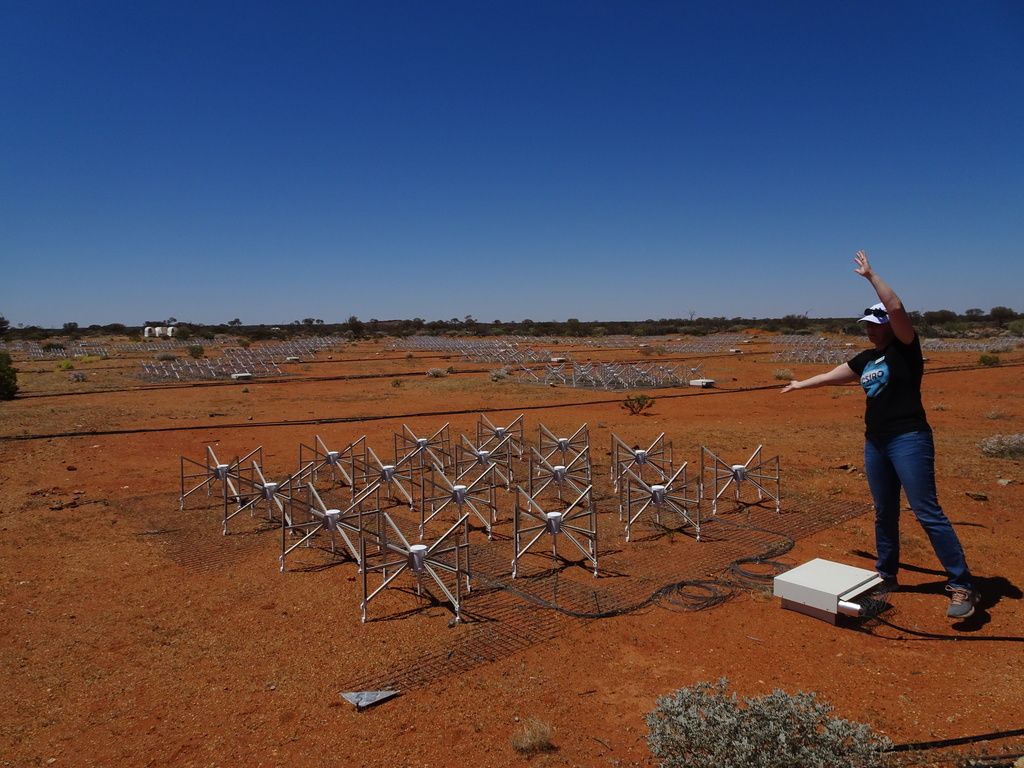Science fiction has its fair share of galaxy-spanning civilizations. From the United Federation of Planets to the Galactic Empire, from the rule of Paul Atreides to that of Cleon II, we have fantasized about people spreading across the vast gulf of space and building a galactic culture. Could such a thing exist in real life? Some astronomers are trying to find out.
In general, it would require the use of technology beyond what we are currently capable of using here on Earth.
Dr Chenoa Tremblay
In a new study, Dr Chenoa Tremblay of the SETI Institute and Professor Steven Tingay of Curtin University looked for artificial signals in 2,880 galaxies. This was possible in a single observation, thanks to the large field of view of the Murchison Widefield Array. Humanity knows the precise distance of slightly less than half – 1,317 – of those galaxies.
This was among the first searches for extraterrestrial intelligence (SETI) far beyond our galaxy. Tremblay and Tingay looked for artificial signatures – also known as technosignatures – way beyond what humans can produce. If these civilizations are sending messages across their whole galaxies, or even more, manipulating star systems or larger areas, they are bound to require vast amounts of energy.

The Murchison Widefield Array (MWA) used in the search.
Image credit: SETI
“It was Nikolai Kardashev who first proposed the Kardeshev scale in 1964. This is a proposed measure of how much power a civilization could output in a single burst of energy depending on their technological level. To travel the vast distances between galaxies, a signal must be powered by a single or multiple stars, for instance. Although there are other proposed methods explored similar to the ones we have encountered in popular science fiction novels,” Dr Tremblay told IFLScience.
“In general, it would require the use of technology beyond what we are currently capable of using here on Earth.”
No artificial signals were detected. We would have led with that if it had been. But this kind of search is “important for narrowing down the cosmic haystack.”
There are also assumptions in place that a galaxy-spanning civilization would be using those enormous amounts of energy. Some research has pointed out that it is possible for a willing civilization to spread around a galaxy with approachable technology – but it wouldn’t look quite like what sci-fi has imagined.
The researchers hope to do more searches of this kind. This was the first extragalactic search for life at low frequency.
“This work is time-consuming and requires a lot of computational resources,” said Dr Tremblay. “However, if we don’t look, we won’t find anything. Prof. Tingay and I have previously published four similar pieces of work looking toward the center of the Milky Way, toward the Orion Nebula, and toward Vela with a focus on sources of potential emission within our own Galaxy.”
“This was our first search toward external galaxies. Taking what we have learned through this process, we would like to continue this work in the future.”
A paper describing the results is accepted for publication in the Astrophysical Journal and is available on ArXiv.
Source Link: SETI Starts Looking For Highly Advanced Extragalactic Civilizations in 2,880 Galaxies